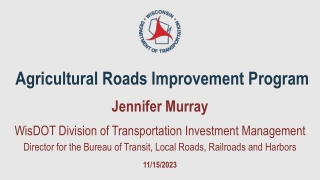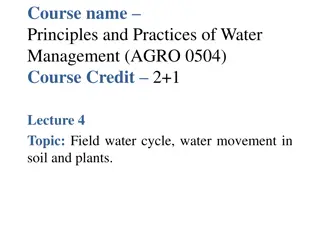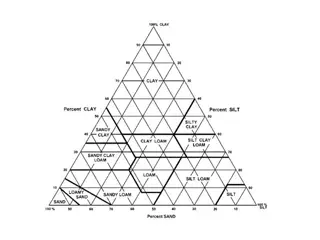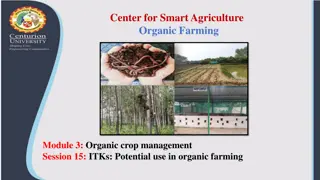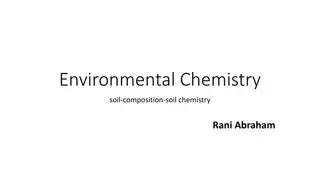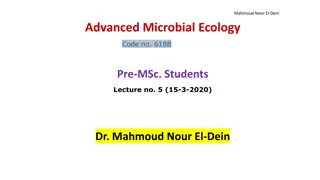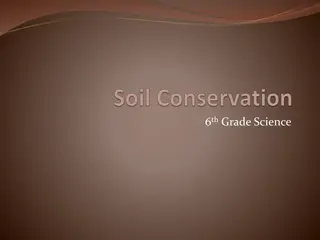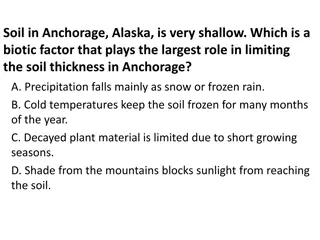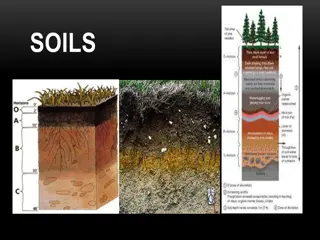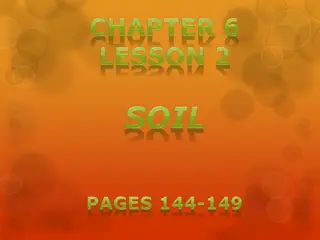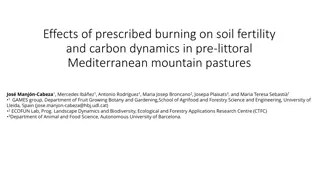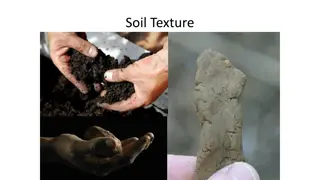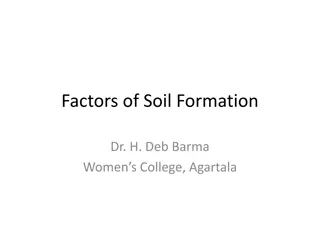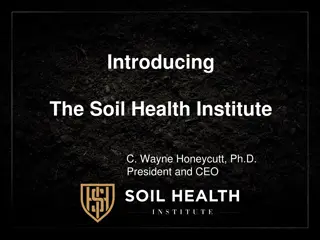Agricultural Practices: Soil Preparation, Sowing, Manuring
Agriculture, the art and science of cultivating soil, growing crops, and raising livestock, involves essential practices such as soil preparation, sowing of seeds, and manuring for optimal crop yield. Discover the significance and methods of these agricultural practices in enhancing agricultural productivity and sustainability.
Download Presentation

Please find below an Image/Link to download the presentation.
The content on the website is provided AS IS for your information and personal use only. It may not be sold, licensed, or shared on other websites without obtaining consent from the author.If you encounter any issues during the download, it is possible that the publisher has removed the file from their server.
You are allowed to download the files provided on this website for personal or commercial use, subject to the condition that they are used lawfully. All files are the property of their respective owners.
The content on the website is provided AS IS for your information and personal use only. It may not be sold, licensed, or shared on other websites without obtaining consent from the author.
E N D
Presentation Transcript
StudyMafia.Org Agricultural Submitted To: Studymafia.org Studymafia.org Submitted By:
Table Contents Definition Introduction Agricultural Practices Importance of Agriculture Conclusion 2
Definition Agriculture is the art and science of cultivating the soil, growing crops and raising livestock. 3
Introduction Food is a basic requirement for every living being. We depend on plant and animals for food. Ancient men began the cultivation of food in a small area and used certain procedures for their management and improvement. This art of cultivation of the crop is called agriculture. 4
Introduction In agriculture, there are certain parameters to be considered such as the type of crop, properties of soil, climate etc. Depending upon these parameters, farmers decide which crop is to be cultivated at what time of the year and place. Moreover, to yield a high-quality product, suitable soil, climate and season are not sufficient. It requires a set of procedures which needed to be followed. The measures which are followed to raise crops are called agricultural practices. 5
Agricultural Practices Soil preparation Before raising a crop, the soil in which it is to be grown is prepared by ploughing, levelling, and manuring. Ploughing is the process of loosening and digging of soil using a plough. This helps in proper aeration of the soil. After ploughing, the soil is distributed evenly and levelled in the process called levelling. The soil is then manured. 7
Agricultural Practices Sowing Selection of seeds of good quality crop strains is the primary stage of sowing. After the preparation of soil, these seeds are dispersed in the field and this is called sowing. Some crops like paddy are first grown into seedlings in a small area and then transplanted to the main field. 8
Agricultural Practices Manuring Crops need nutrients to grow and produce yield. Thus, the supply of nutrients at regular intervals is necessary. Manuring is the step where nutritional supplements are provided and these supplements may be natural (manure) or chemical compounds (fertilizers). 9
Agricultural Practices Irrigation Irrigation is the supply of water. Sources of water can be wells, ponds, lakes, canals, dams etc. Over irrigation may lead to water logging and damage the crop. This frequency and interval between successive irrigation need to be controlled. 10
Agricultural Practices Weeding Weeds are unwanted plants which grow among crops. They are removed by using weedicides, by manually pulling them with hands and some are removed during soil preparation. 11
Agricultural Practices Harvesting Once the crop is matured, it is cut and gathered, this process is called harvesting. Followed by harvesting, grains are separated from the chaff either by threshing, or manually in small scale (winnowing). 12
Agricultural Practices Storage Grains yielded are stored in granaries or bins at godowns for later use or marketing. Therefore, methods of crop protection need to be better. In order to protect grains from pest and rodents- cleaning, drying, fumigation, etc., are done prior to storing. 13
Importance of Agriculture Source of Livelihood Contribution to National revenue Supply of Food as well as Fodder Significance to the International Trade Marketable Surplus Source of Raw Material 14
Importance of Agriculture Significance in Transport Foreign Exchange Resources Great Employment Opportunities Economic Development Source of Saving Food Security 15
Conclusion In most parts of the world, agriculture is an important source of livelihood. This entails hard work, but it contributes to the nation s food safety and health. Agriculture was the primary source of the economy prior to the industrial revolution. 16
References Google.com Wikipedia.org Studymafia.org Slidespanda.com
Thanks Thanks To To StudyMafia StudyMafia.org .org


